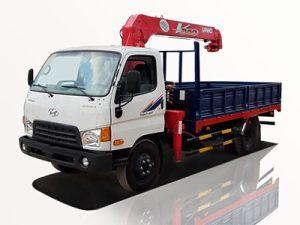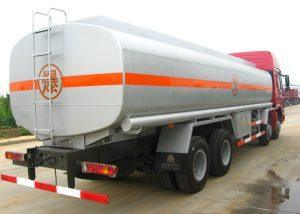Monday to Saturday - 8:00 -17:30
How is Bitumen Transported: A Comprehensive Guide
Bitumen, a sticky, black, and highly viscous liquid or semi-solid form of petroleum, plays a crucial role in various industries, particularly in asphalt production and road construction. Transporting bitumen safely and efficiently is vital to meet the demands of these sectors. This article explores the various methods of bitumen transport, the challenges associated with it, and practical tips for successful logistics management.
Table of Contents
- Introduction
- Understanding Bitumen
- Transportation Methods
- Bitumen Transport via Pipelines
- Transporting Bitumen via Tankers
- Bitumen Transport via Rail Cars
- Transporting Bitumen in Containers
- Challenges in Bitumen Transport
- Environmental Considerations
- Case Studies
- FAQs
Understanding Bitumen
Bitumen, primarily derived from oil sands or petroleum, is characterized by its high viscosity and density. It’s commonly used in construction, especially for road surfaces, roofs, and waterproofing products. The key properties of bitumen include:
- Viscosity: Bitumen’s thick consistency varies with temperature.
- Adhesion: Bitumen effectively binds aggregates in asphalt.
- Durability: It withstands varying weather conditions.
Understanding these properties helps in identifying the most suitable transportation methods and handling practices.
Transportation Methods
Bitumen can be transported using several methods, each suited for different distances, volumes, and terrain types. The primary methods include pipelines, tankers, rail cars, and containers, each with unique advantages and considerations.
Bitumen Transport via Pipelines
Pipelines are one of the most efficient methods for transporting bitumen over long distances. They are often used for transporting large volumes from production sites to refineries or distribution points.
Advantages of Pipelines
- Cost-Effective: Lower transportation cost per barrel over long distances.
- Safety: Less risk of spills and accidents compared to other methods.
- Continuous Flow: Allows for constant supply without delays.
Challenges of Pipelines
- Initial Investment: High construction costs for the pipeline infrastructure.
- Maintenance: Requires regular monitoring and maintenance to prevent leaks.
Transporting Bitumen via Tankers
Tankers, either trucks or ships, are commonly used for transporting bitumen over medium to short distances. They are particularly useful when pipelines are not available.
Advantages of Tankers
- Flexibility: Can access remote areas or locations without pipeline infrastructure.
- Scalability: Easily adjust cargo volume based on demand.
Challenges of Tankers
- Higher Costs: More expensive per barrel than pipeline transport.
- Time-Consuming: Slower than pipelines due to loading and unloading times.
Bitumen Transport via Rail Cars
Transporting bitumen by rail is another viable option, especially in regions with an extensive rail network. Rail cars designed specifically for liquid bulk transport are used for this purpose.
Advantages of Rail Transport
- Capacity: Can carry large quantities of bitumen over long distances.
- Wide Accessibility: Can reach areas far from pipeline or port access.
Challenges of Rail Transport
- Delay: May involve longer transit times due to scheduling and routing.
- Infrastructure: Condition of railways can affect delivery times and safety.
Transporting Bitumen in Containers
For smaller shipments or in regions lacking infrastructure, bitumen can also be transported in specialized containers. This method is generally more suited for local deliveries.
Advantages of Container Transport
- Portability: Containers are easier to transfer between transport modes (truck, rail, ship).
- Storage: Provides a secure way to store bitumen before use.
Challenges of Container Transport
- Limited Volume: Not ideal for large-scale transport.
- Higher Handling Costs: Increased labor for loading and unloading.
Challenges in Bitumen Transport
Regardless of the transportation method, several challenges can arise when transporting bitumen:
Temperature Control
Bitumen must be heated to remain in a liquid state for easy pumping and transportation. Maintaining the appropriate temperature during transport can be energy-intensive and requires specialized equipment.
Environmental Regulations
Compliance with local and international environmental regulations is essential to minimize the environmental impact of bitumen transport. This includes proper containment measures to prevent leaks and spills.
Safety Risk Management
Safety is paramount when transporting hazardous materials like bitumen. Companies must invest in training and equipment to ensure safe handling and prevent accidents.
Logistical Coordination
Effective logistical coordination is necessary to align transport schedules, delivery points, and resource allocation. This can be complex, especially for large-scale operations.
Environmental Considerations
Transporting bitumen poses environmental risks that require careful management. Strategies include:
Spill Response Plans
Companies should have a spill response plan in place to mitigate the effects of any leaks or spills quickly. This includes training staff and maintaining necessary equipment on-site.
Use of Eco-Friendly Practices
Adopting sustainable transportation practices, such as using alternative fuels for tankers and optimizing routes for reduced emissions, can lessen environmental impacts.
Case Studies
Real-world examples of bitumen transport illustrate challenges and solutions within the industry:
Case Study 1: Alberta’s Oil Sands
The oil sands in Alberta, Canada, use extensive pipeline networks to transport bitumen. Despite high initial infrastructure costs, the pipelines have proven efficient and safe for transporting massive quantities of bitumen to refineries.
Case Study 2: Road Transport Innovations
In Eastern Europe, some companies have adapted their tanker designs to improve thermal efficiency, leading to reduced energy consumption during transport. These innovations have set new standards for temp-controlled logistics in the region.
FAQs
What is the safest method for transporting bitumen?
Pipelines are generally considered the safest method due to lower risks of spills and accidents compared to tankers or rail transportation.
How is bitumen heated during transport?
Bitumen is heated using electric or steam heating systems designed to maintain the material’s temperature within required limits for pumping.
What are the environmental risks of transporting bitumen?
Environmental risks include potential spills, greenhouse gas emissions from transport vehicles, and habitat disruption from pipeline construction.
How long does bitumen transport take?
Transport times vary based on distance and method. Pipelines typically offer the fastest delivery, whereas tankers and rail cars may take longer due to loading and unloading logistics.
Are there regulations specific to bitumen transport?
Yes, various local and international regulations govern the transport of hazardous materials, including bitumen, focusing on safety, environmental protection, and spill response.
What should companies consider when choosing a transport method?
Companies need to consider factors including cost, distance, volume, regulatory compliance, and safety when selecting their bitumen transport method.









